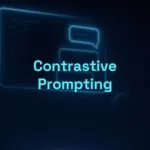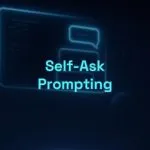Hypothetical Scenarios Prompting: Explore Possibilities with Imaginary Scenarios

Want to explore innovative ideas or anticipate outcomes in imaginary situations? The Hypothetical Scenarios Prompting technique involves asking the AI to analyze or respond to fictional scenarios, using prompts like “What if…?” or “Imagine that…”. This stimulates creativity, helps with strategic planning, and supports the understanding of decision-making implications.
If you’re an end user using AI for planning, content creation, decision-making, or strategy development, mastering this technique will open new avenues of exploration.
Table of Contents
What Is the Hypothetical Scenarios Prompting Technique?
Hypothetical Scenarios Prompting is a prompt engineering technique that instructs the AI to explore, analyze, or respond to fictional or imaginary scenarios. The user defines a hypothetical situation—such as “What if all cars were solar-powered?” or “Imagine you’re an astronaut on Mars”—and asks the AI to describe outcomes, predict consequences, or propose solutions. This technique leverages the AI’s capacity to simulate complex situations, generating creative, strategic, or analytical responses.
The benefits include stimulating creativity, enabling future planning, and exploring ideas without real-world risks. It’s a versatile technique that empowers users at all levels to generate insights across contexts—from strategic planning to creative writing.
Origin of Hypothetical Scenarios Prompting
Although the use of “hypothetical scenarios” is traditional in philosophy, education, and business simulation, its adaptation to prompt engineering gained relevance with the advancement of LLMs, which showed remarkable abilities to explore unconventional situations. Inspired by role-playing and strategic simulations, this technique is widely used in tools like ChatGPT, Claude, and Grok.
How Does It Work?
Hypothetical Scenarios Prompting is simple to apply but requires clear prompts to define the scenario and the objective. Follow these steps:
- Define the hypothetical scenario: Create a fictional situation with specific details, such as context, characters, or conditions (e.g., “What if cities were 100% sustainable?”).
- Specify the task: Ask the AI to analyze, predict, propose solutions, or describe the scenario (e.g., “What would be the benefits and challenges?”).
- Determine the format: Request responses in paragraphs, bullet points, narrative, or another clear format.
- Add context if necessary: Provide extra information to make the scenario more realistic (e.g., “Consider current technological limitations”).
When to Use It?
Hypothetical Scenarios Prompting is ideal for situations requiring creativity, planning, or exploration of possibilities. Use it when you want to:
- Stimulate creativity: Perfect for creative writing, brainstorming, or innovation.
- Plan strategies: Great for anticipating outcomes in business, policy, or projects.
- Explore implications: Ideal for understanding the consequences of decisions or future scenarios.
Practical Examples of Hypothetical Scenarios Prompting in Action
See how to apply Hypothetical Scenarios Prompting in real-world scenarios with prompts you can adapt. The examples are simple, practical, and reflect common prompt engineering practices, showing how fictional scenarios generate useful responses.
Example 1: Futuristic Impact Analysis
Context: You’re an urban planner looking to predict the impact of fully autonomous vehicles in the future.
uppose all cars worldwide are autonomous by 2040. What would be the positive and negative impacts on cities?Expected result:
Analysis of traffic, urbanization, safety, and job markets.
Why it works:
It explores the complex implications of a plausible future.
Example 2: Creative Product Exploration
Context: You’re a sports designer looking for ideas for new competitions in a low-gravity setting.
Imagine gravity on Earth was 20% lower. What new types of sports could emerge?Expected result:
Creative ideas for aerial sports, jumping competitions, or floating challenges.
Why it works:
It encourages out-of-the-box solutions unconstrained by current norms.
Example 3: Resolving a Conflict in a Space Scenario
Context: You’re a science fiction writer looking for ideas for a story set in a Mars colony.
Full prompt:
Imagine you’re the leader of a colony on Mars in 2075. There’s a conflict among colonists over how to divide limited resources like water and oxygen. Describe how you would resolve the conflict, considering the challenges of the Martian environment. Write the response in a narrative paragraph, with a serious and realistic tone.Expected result:
As the leader of the Martian colony in 2075, I addressed the conflict over water and oxygen by calling a community assembly. I proposed a distribution system based on priority needs: habitat maintenance crews received larger quotas due to their critical roles, while non-essential activities, such as experimental farming, were temporarily scaled back. To ensure transparency, I implemented a digital dashboard displaying daily resource usage, fostering trust. The harsh Martian conditions—natural scarcity and reliance on recycling—required difficult negotiations, but the solution balanced fairness and survival, preserving colony unity.
Why it works:
The prompt creates a vivid hypothetical setting (“Mars colony, 2075”) and defines a clear task (“resolve the conflict”), format (“narrative paragraph”), and tone (“serious and realistic”). The AI generates a creative yet plausible solution grounded in context.
Start Using Hypothetical Scenarios Prompting Now
Hypothetical Scenarios Prompting is a versatile technique for exploring possibilities, planning strategies, or creating stories by using imaginary scenarios to generate creative and analytical responses. Whether you’re innovating a project or writing fiction, it helps you develop ideas without limits.
Benefits of the technique:
- Stimulates creativity with fictional settings.
- Enables strategic planning and outcome forecasting.
- Accessible to beginners and powerful for advanced users.
🎯 In summary
🧠 Technique: Hypothetical Scenarios Prompting.
💡 Ideal for: Stimulating creativity, planning strategies, exploring implications.
✅ Helps you: Explore possibilities with imaginary scenarios.
Extra Tip
Combine Hypothetical Scenarios Prompting with Socratic Prompting to explore scenarios through reflective questions, like “What would be the challenges in this scenario?”
Advanced Variations
Techniques like Persona-Based Prompting (adopt a role) or Context Priming (provide detailed context) can complement Hypothetical Scenarios Prompting, but this one is ideal for exploring fictional possibilities.
🔗 Want to explore more techniques like this?
Read our Practical Guide to Prompt Techniques, Frameworks, and Formulas for LLMs



